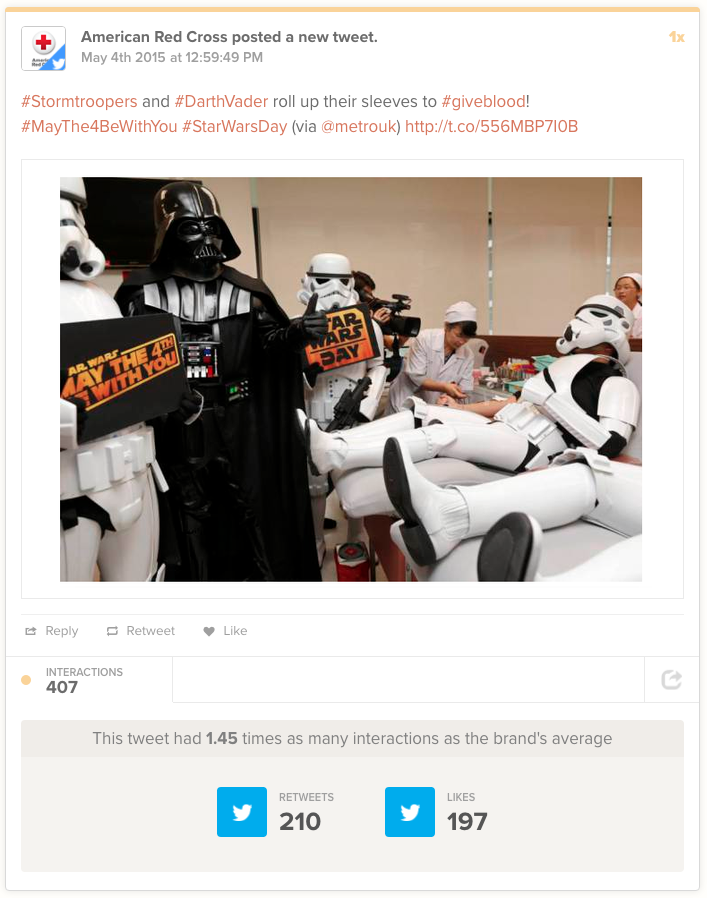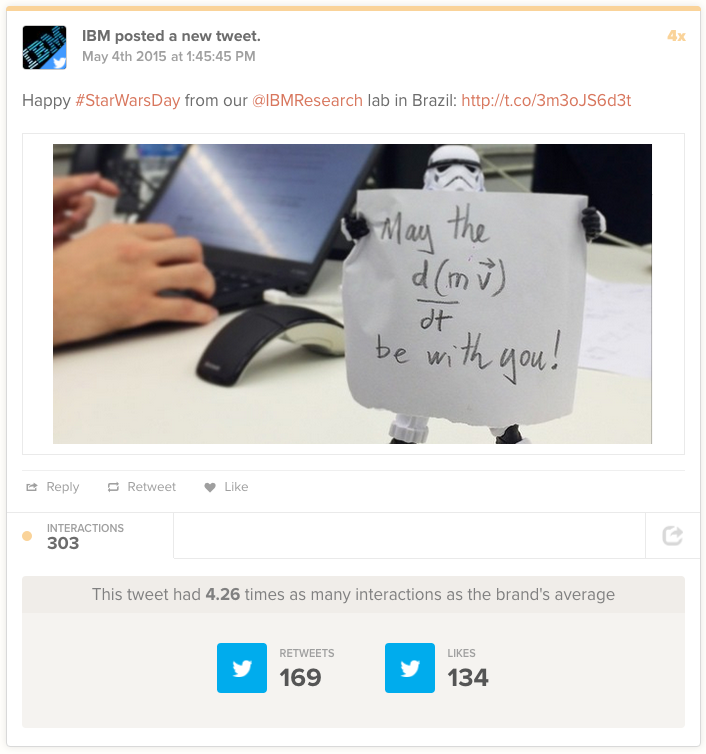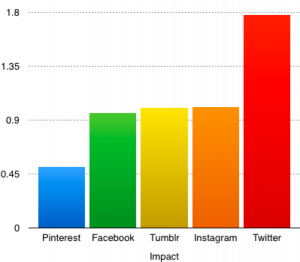Brands LOVE holiday marketing because the Internet loves holiday-related content. There are more than 2,300 holidays and observances in the year — some of them probably existing only on the Internet — which is an average of 6.42 holidays or observances every day. This presents plenty of opportunities for marketers to build awareness by joining a conversation that the Internet is already excited about and organized around.
Why the fuss? It’s really hard to publish content that resonates. In 2016, TrackMaven’s report, The Content Marketing Paradox Revisited, found that publishing rates across all channels increased by 35 percent in 2015, while, at the same time, engagement declined by 17 percent. More specifically, average engagement per brand decreased on every major network, except for Twitter. As a group, marketers are getting better at producing content that doesn’t engage.
The artesian well of non-traditional holiday content has a natural affinity on social networks. This provides a great opportunity to join a conversation with your audience at a moment when that makes sense.
Think about how your brand might reasonably produce social content around specific holidays. For example, last Sunday’s holidays included National Chocolate Parfait Day, National Lemonade Day, National Mother Goose Day, Law Day, Silver Star Service Banner Day, and Loyalty Day.
National Lemonade Day, which promotes entrepreneurship for children, is an especially natural fit if you’re a producing content for an elementary school, a grocery chain, or the Gulf Citrus Growers Association. For other brands, coming up with the kind of authentic content that will resonate on this holiday might be a stretch. If you’re in this latter category, these tips will help you decide whether or not to publish around the next holiday.
1. Organize your holiday marketing strategy.
Sure, National Days are being added all the time, but that’s no excuse for failing to plan. Work holidays into your planned content schedule so you have plenty of time to come up with graphics, photos, and clever copy. For example, #StarWarsDay is tomorrow, falling on May 4 every year and celebrating everything related to Star Wars. The Red Cross sets a great example for how preparation pays off when it comes to holiday content. Each of their three posts on #StarWarsDay in 2015 performed better than average.
2. Ask yourself, “Will a message about this holiday be appreciated by my audience?”
If you’re 80 percent sure that the holiday content you’re planning to publish will be well-received by your audience, go for it! When IBM published about #StarWarsDay last year, they capitalized on the interests of their science-loving audience by adding the physics equation for “force” into an apparently impromptu image.
IBM’s three identical posts for #StarWarsDay 2015 all received more than three times as many interactions as the IBM average at that time. From an audience engagement perspective, the decision to jump into the conversation was the right one!
3. Review the last year’s holiday content.
If you’ve followed the first of these four steps for marketing around a holiday, you’ll have time to review content before putting pen to paper. Perform a Google search, research related keywords in the native platforms you’re publishing on, or, best of all, do a keyword search in TrackMaven’s massive library of content. These exercises will let you know whether the holiday you’re thinking of publishing about performed well in the past, and can reveal what kind of messaging worked best, so you can start drafting content that will resonate.
4. Publish on the lowest-cost channels first.
Content on Twitter has a very short half-life, which makes it an ideal platform for publishing experimental content — like a tweet about a holiday.
In addition, the appetite for holiday-related content is higher on Twitter. A review of all 108 pieces of #StarWarsDay content in one our platforms revealed something very interesting. Fifty-three posts performed worse than average, 54 posts performed above average, and one performed precisely as well as average based on TrackMaven’s “impact score,” which compares each post or tweet against the average for the publishing brand over the 30 days prior to publication.
The #StarWarsDay content got the worst reception on Pinterest, where it performed at about half the rate of the average post (0.509). Facebook content in the sample performed about as well as the average post, with an impact score of 0.96. Instagram was the next best, with slightly better than average performance (1.01). Twitter content did the best by a wide margin, with an average impact score of 1.78.
With these four holiday marketing tips in hand, you’re equipped to make the most these observances going forward. #Maythe4thbewithyou!




